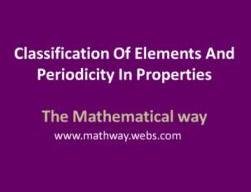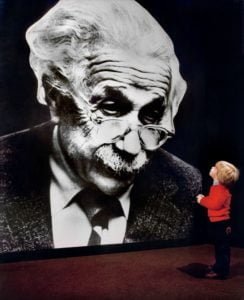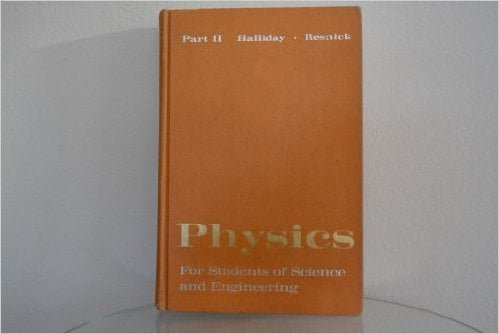
Physics is very passionating and interesting subject nowadays. There are so many videos, blogs and articles available on the internet but there are some classical textbooks which are necessary to study and understand the basic physics.
One of the best physics books is ‘’Resnick and Halliday’’. This book is a textbook of high school physics and I don’t think so that anyone can pursue higher physics without knowing basic physics given in this book.
There are two volumes of this Resnick and Halliday physics. The first volume is devoted to mechanics and thermodynamics while the second part of the book is devoted to the electrostatic and modern physics.
First edition of this is published around 1960 there are so many revised editions available in the market but the old edition to the most authentic one.
The main interesting part of the book is a conceptual question given after the chapter and the presentation of the chapter. Every 11th & 12th standard student should follow this book. Calculus-based physics textbooks by Physics Fundamentals, David Halliday, Robert Russell, and Jerlee Walker. The textbook is currently in its tenth edition (published in 2013).
The current edition is a modified version of the original 1960 textbook physics for students of science and engineering by Halliday and Resnick, which was published in two parts (Part I Chapter 1-25 and Cover Mechanics and Thermodynamics; Section Chapter 26; 48 And to include electromagnetism, optics and quantum physics).
Resnick Halliday
The 1966 revision of the first edition of Part 1 changed the title of the textbook to physics. It is widely used in colleges as part of undergraduate physics courses, and for decades for science and engineering, students are known as “standard of gold” of new levels of physics texts. In 2002, the American Physical Society named this work the best known introductory physics text of the 20th century.

The first edition of the book titled Fundamentals of Physics, first published in 1981, was written by Farrell Edwards and John J. Merrill was modified by the original text. Walker has been a modified author since 1990.
In more recent editions of the textbook, starting with the fifth edition, Walker has included “Checkpoint” questions. These are conceptual ranking-task questions that help the student before starting numerical calculations. The textbook covers most of the basic topics in physics:
Berkley Physics course
- Mechanics
- Waves
- Thermodynamics
- Electromagnetism
- Optics
- Special Relativity
The extended edition also contains introductions to topics such as quantum mechanics, atomic theory, solid-state physics, nuclear physics and cosmology. A solution manual and a study guide are also available.
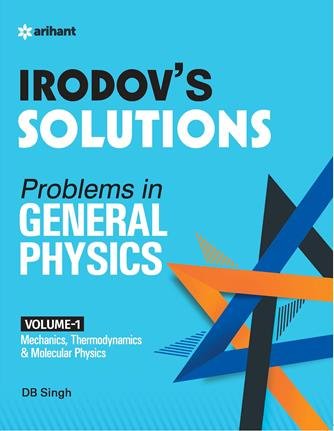
One of the other interesting books is I E Irodov there are almost 2 thousand physics problem given in this book there is no theory part it is only problem-based book designed of the problem and the level of the problem is bit higher than Resnick and Halliday there are some theory books written by I E Irodov one of them is mechanics by I E Irodov and another is electromagnetism by Irodov.
The students who are interested in the higher physics and particularly in electromagnetism there are books written by E.M Purcell and electrodynamics by David Griffith. Actually, there are five volumes of physics books which are very famous known as Berkley physics course:
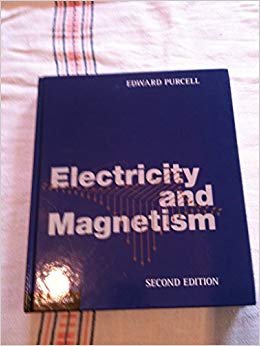
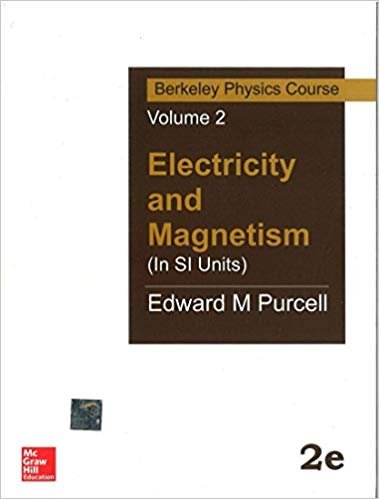
The series consists of the following five volumes, each of which was originally used in a one-semester course at Berkeley:
- Mechanics by Charles Kittel, et al
- Electricity and Magnetism by Edward M. Purcell
- Waves by Frank S. Crawford, Jr.
- Quantum Physics by Eyvind H. Wichmann
- Statistical Physics by Frederick Reif
Volume 2, Electricity and Magnetism, by Purcell (Harvard), is particularly well known and was influential for its use of relativity in the presentation of the subject at the introductory college level. Half a century later the book is still in print, in an updated version by authors Purcell and Morin. The third edition of the text, published by Cambridge University Press in 2013, was completely revised and updated to SI units.
Famous Russian Physics Books
The Course of Theoretical Physics is a ten-volume series of books covering theoretical physics that was initiated by Lev Landau and written in collaboration with his student Evgeny Lifshitz starting in the late 1930s.
It is said that Landau composed much of the series in his head while in an NKVD prison in 1938-1939. However, almost all of the actual writing of the early volumes was done by Lifshitz, giving rise to the witticism, “not a word of Landau and not a thought of Lifshitz”.
The first eight volumes were finished in the 1950s, written in Russian and translated into English in the late 1950s by John Stewart Bell, together with John Bradbury Sykes, M. J. Kearsley, and W. H. Reid. The last two volumes were written in the early 1980s. Vladimir Berestetskii and Lev Pitaevskii also contributed to the series. The series is often referred to as “Landau and Lifshitz“, “Landafshitz” (Russian: “Ландафшиц”), or “Lanlifshitz” (Russian: “Ланлифшиц”) in informal settings.
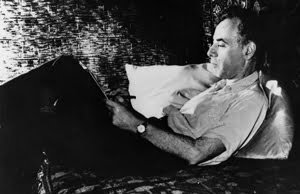
there are five books in this course one is classical mechanics second is electricity and magnetism third is waves fourth is quantum physics and fifth is statical physics. Every physics student should this course at least once. For higher physics, Feynman lecture of physics is a very famous amount the students and physics course landau lifstiz is like a bible or Geeta for physics students.
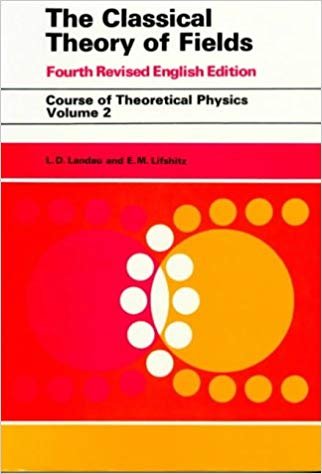
According to Wikipedia
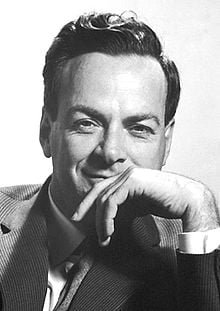
The Feynman Lectures on Physics is a physics textbook based on some lectures by Richard P. Feynman, a Nobel laureate who has sometimes been called “The Great Explainer”. The lectures were presented hbefore undergraduate students at the California Institute of Technology (Caltech), during 1961–1963. The book’s co-authors are Feynman, Robert B. Leighton, and Matthew Sandshttps://www.amazon.in/Irodov-Problems-physics-Solution-volumes/dp/B07DSY8JHF?tag=googinhydr18418-21&tag=googinkenshoo-21&ascsubtag=_k_CjwKCAjwzPXlBRAjEiwAj_XTEYzt6rdAZyCFS9bEE0rE_dQZJJRql7hzlwHvs11BG7SgI8eabbXm6xoCpd0QAvD_BwE_k_&gclid=CjwKCAjwzPXlBRAjEiwAj_XTEYzt6rdAZyCFS9bEE0rE_dQZJJRql7hzlwHvs11BG7SgI8eabbXm6xoCpd0QAvD_BwE.

